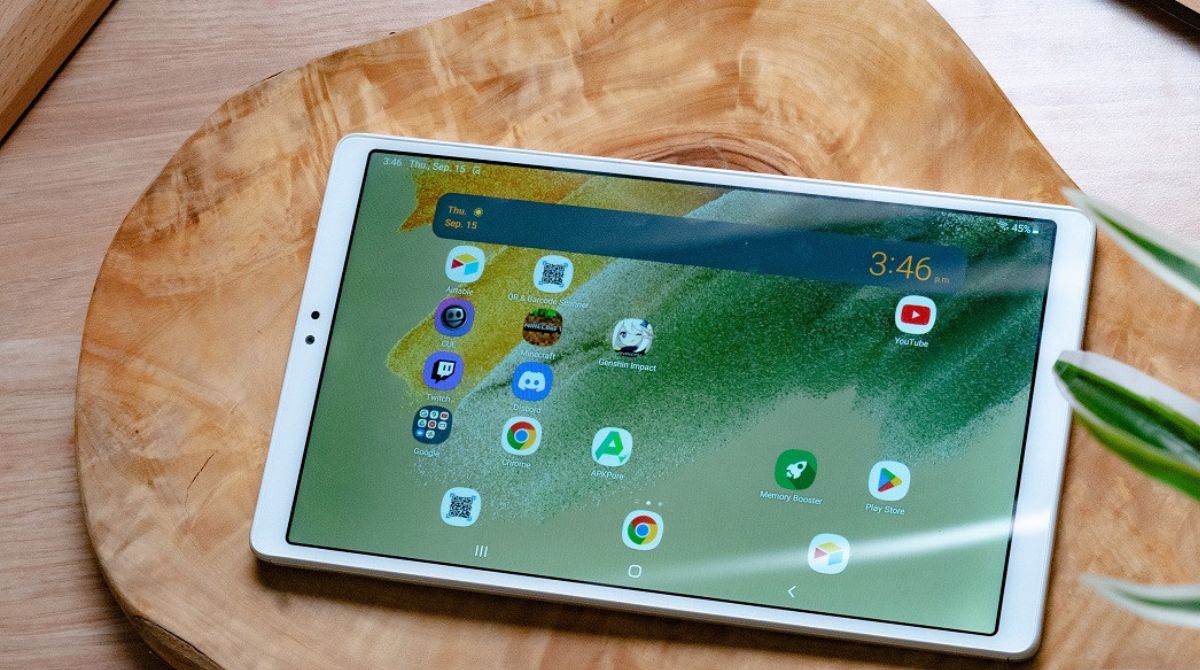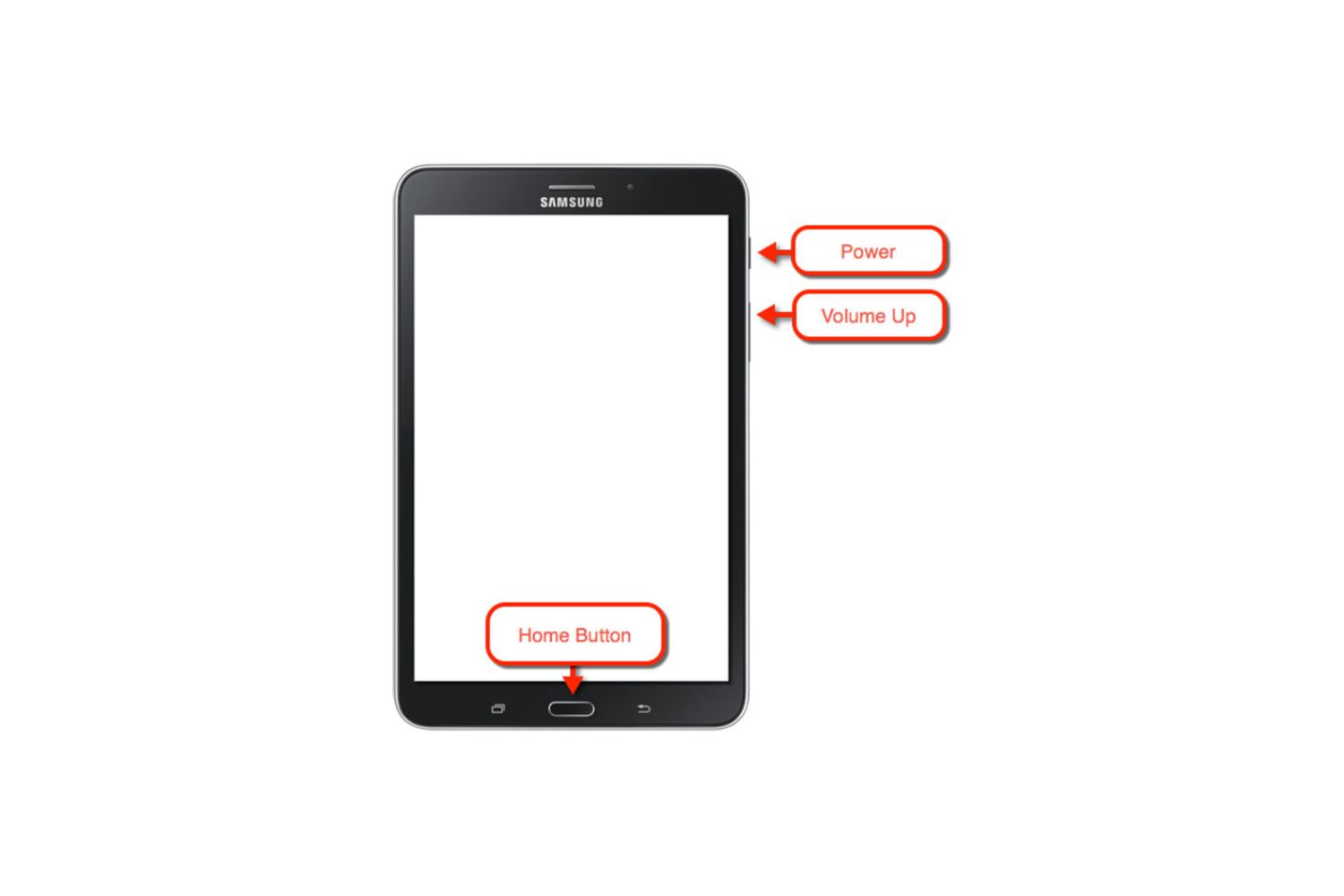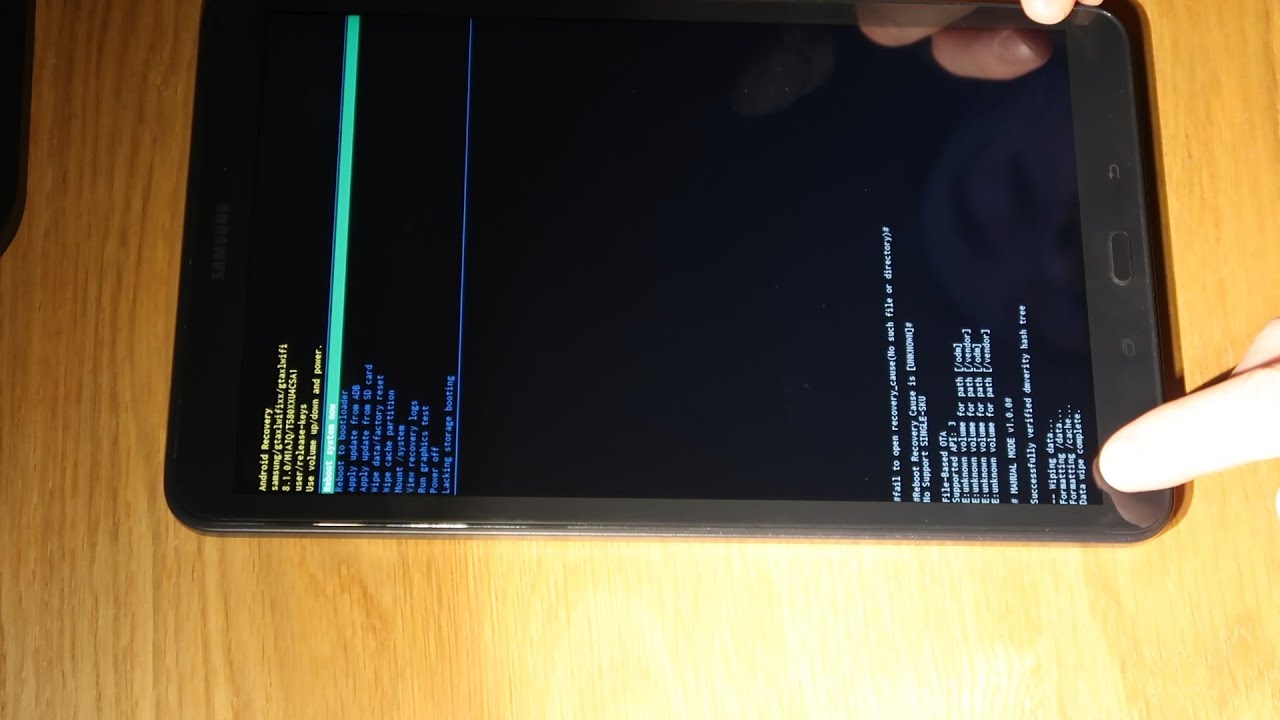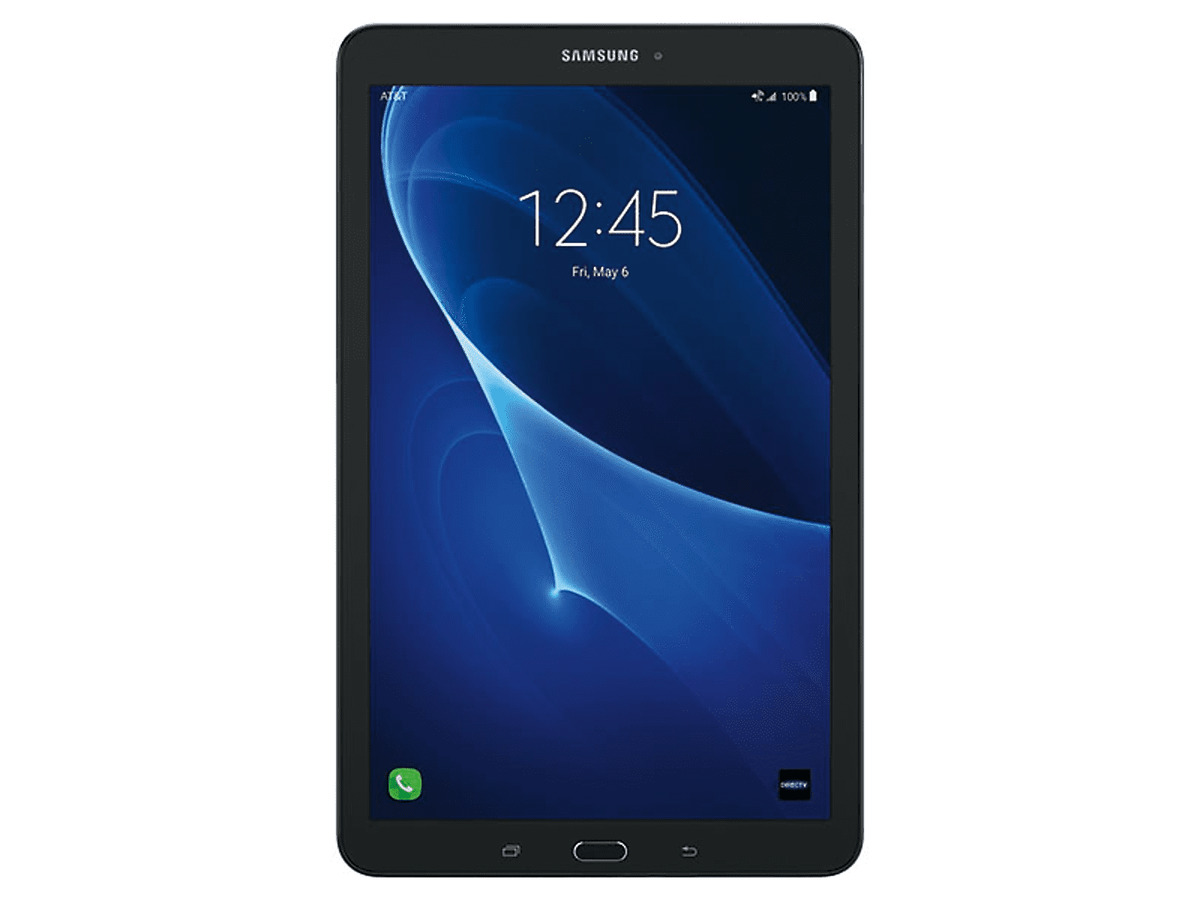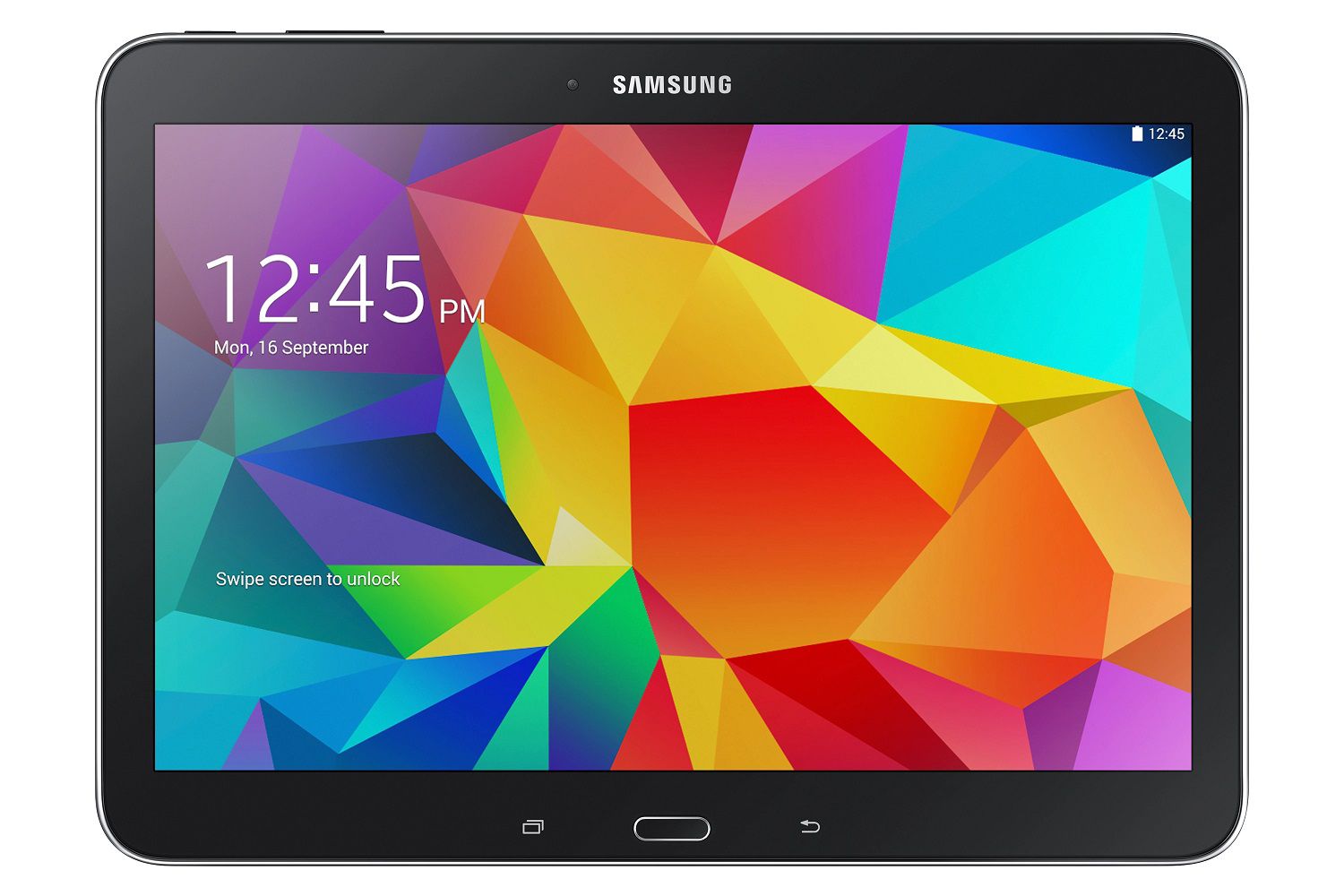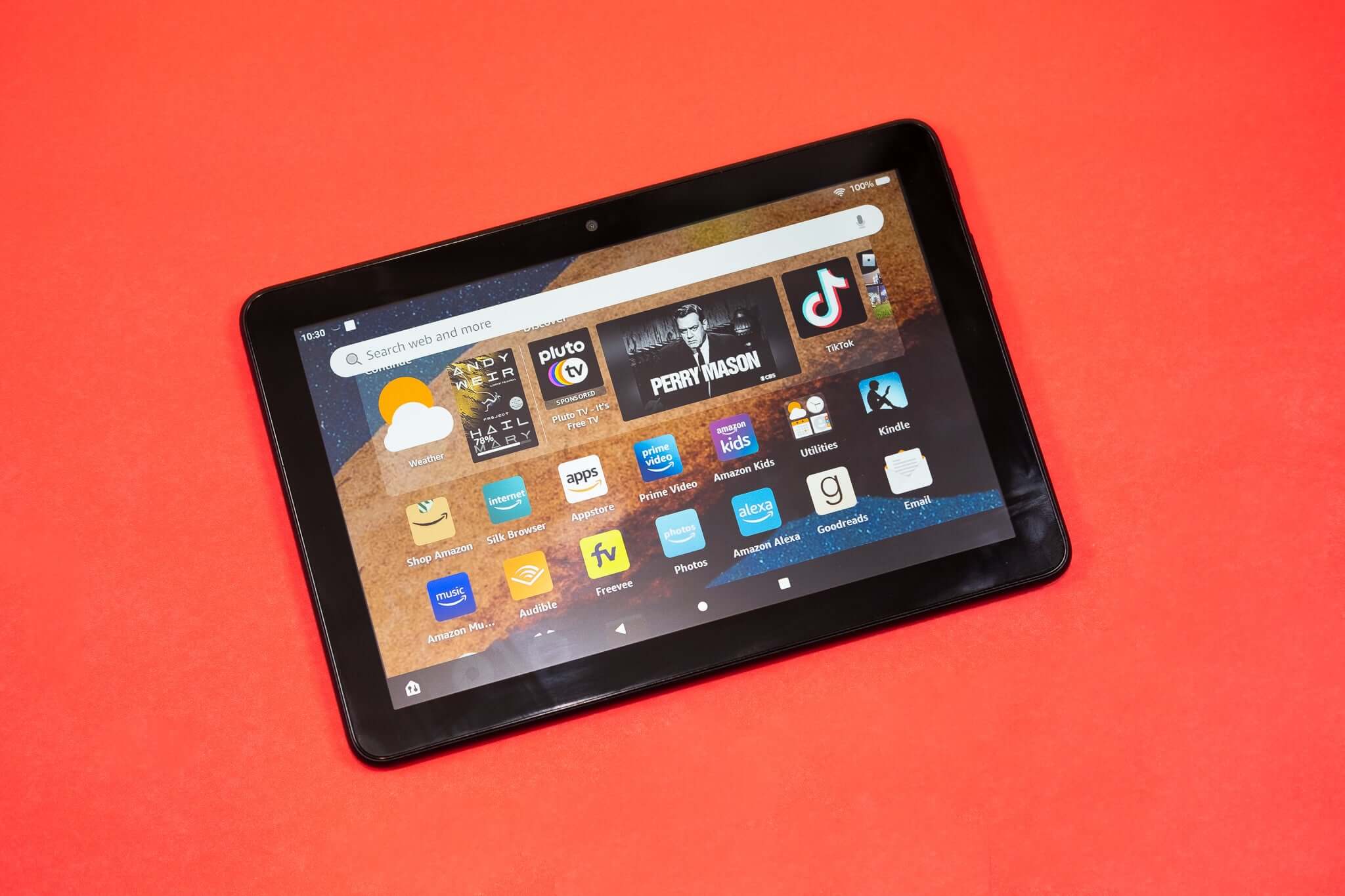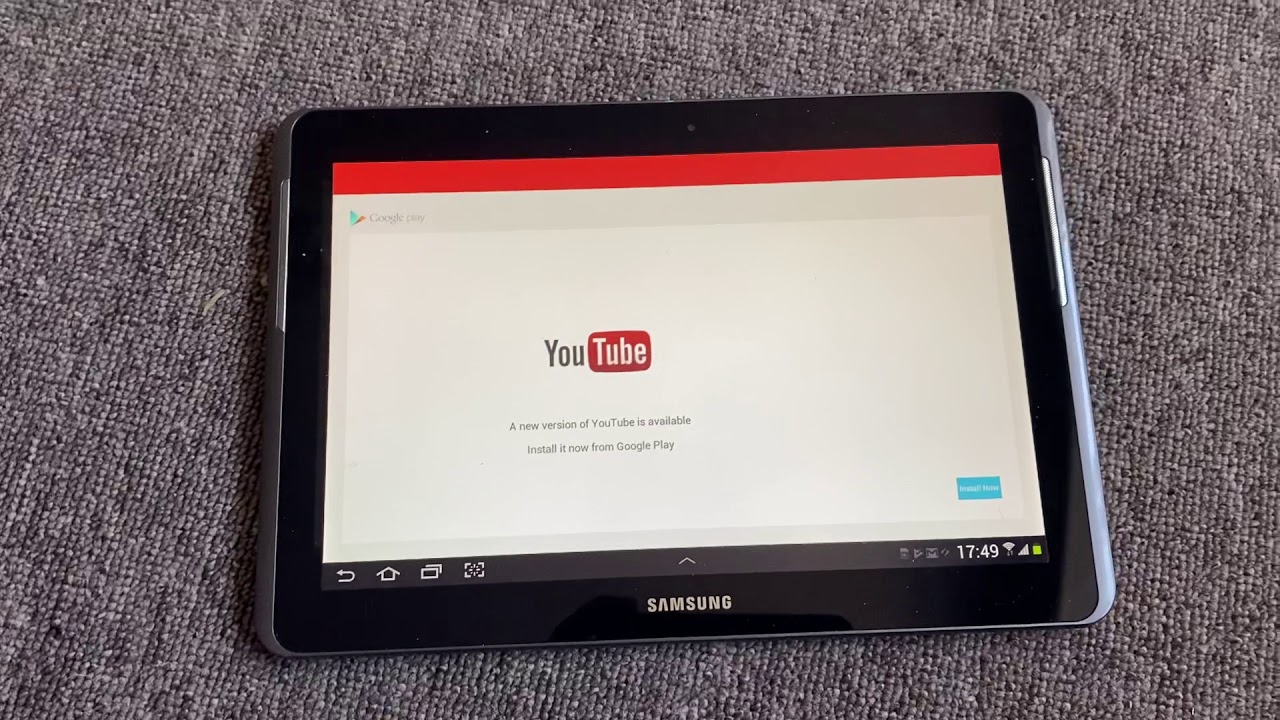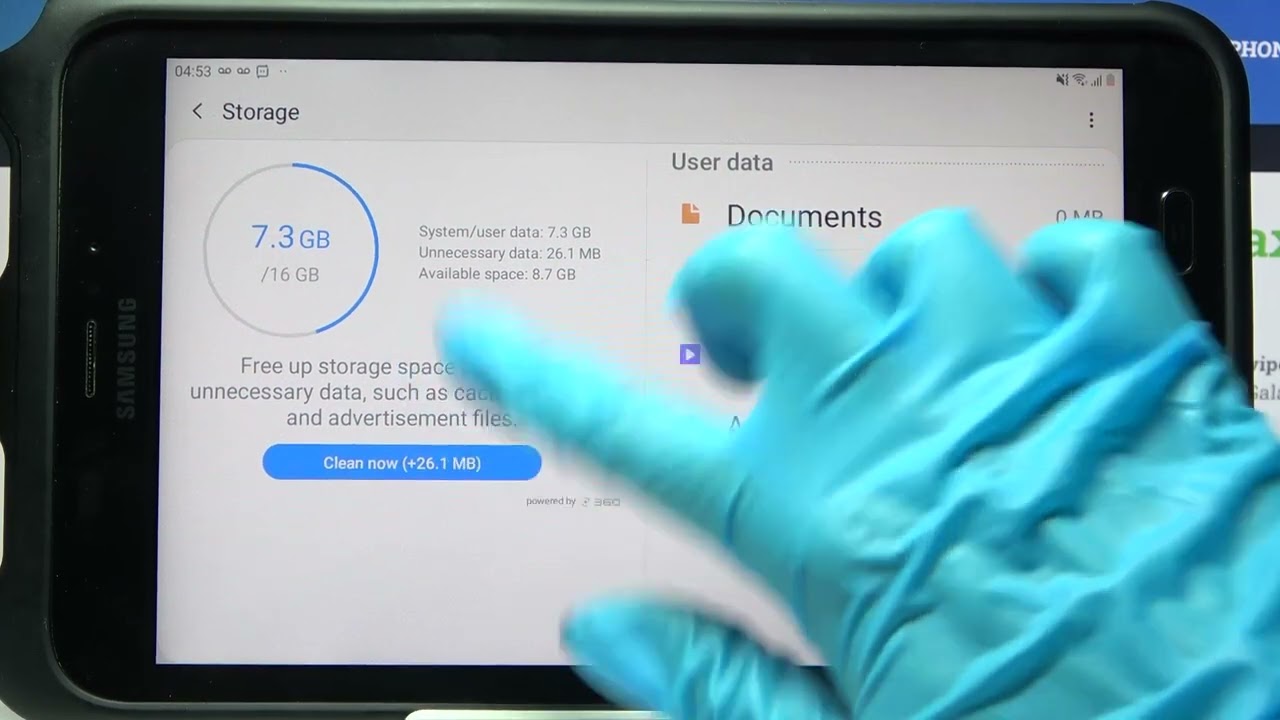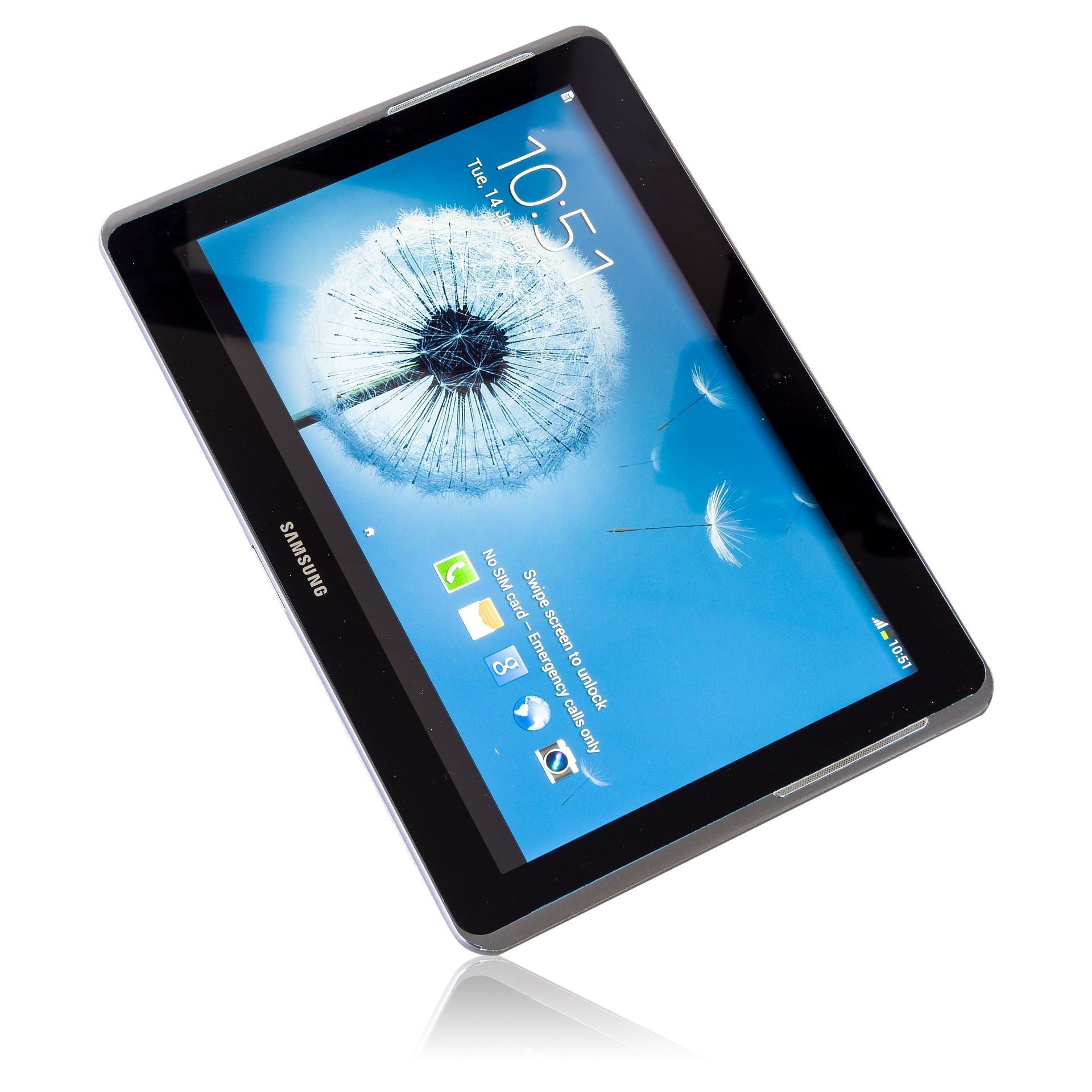Introduction
Resetting a Samsung tablet can be a useful troubleshooting technique in case your device is experiencing performance issues, software glitches, or you simply want to start afresh. By resetting your tablet, you can restore it to its original factory settings, which can help resolve various issues and improve overall functionality.
There are several methods to reset a Samsung tablet, each catering to different scenarios. Whether you are looking to perform a soft reset, factory reset through settings, or even a hard reset using hardware buttons, this guide will provide step-by-step instructions to help you navigate the process.
Before proceeding with any reset method, it is important to note that performing a reset will erase all data and settings on your tablet. It is recommended to back up your important data such as contacts, photos, documents, and apps before initiating the reset.
In this guide, we will cover various methods to reset a Samsung tablet, including soft reset, factory reset through settings, factory reset using hardware buttons, using Samsung Find My Mobile, and hard reset through Recovery Mode. Each method offers a different way to reset your device, so you can choose the one that suits your situation best.
Now that we understand the importance of resetting a Samsung tablet and the need to back up data, let’s dive into the different methods you can use to reset your device.
Why would you need to reset a Samsung tablet?
There are various reasons why you might need to reset a Samsung tablet. Understanding these reasons can help you determine when it is necessary to perform a reset and how it can benefit your device’s performance. Let’s explore some common situations where a reset can be beneficial.
1. Performance issues: Over time, your tablet may start to experience sluggishness, freezes, or unresponsive apps. These performance issues can be caused by excessive cache accumulation, software conflicts, or outdated system files. Resetting your tablet can help clear these issues and improve overall performance.
2. Software glitches: Software glitches can manifest in various ways, such as app crashes, frequent errors, or sudden reboots. These glitches may occur due to incompatible software updates, corrupted files, or conflicting apps. By resetting your tablet, you can resolve these glitches and restore the software to a stable state.
3. Forgotten password or pattern lock: If you have forgotten the password or pattern lock of your tablet, resetting it can help you regain access. However, keep in mind that performing a reset will erase all data on your device, so it is important to have a backup of your important files beforehand.
4. Selling or donating your tablet: Before selling or donating your tablet, it is crucial to ensure that your personal data is completely wiped from the device. Resetting your tablet to its factory settings removes all personal information, making it safe to pass on to another user.
5. Starting fresh: Sometimes, you may simply want a fresh start with your tablet. Whether you want to customize your device from scratch or reorganize your apps and settings, performing a reset allows you to begin anew without any previous configurations or data.
6. Resolving network or connectivity issues: If your tablet is experiencing difficulties connecting to Wi-Fi networks or Bluetooth devices, a reset can often resolve these connectivity issues. Resetting the network settings on your tablet can help clear any network-related conflicts and allow for a fresh connection setup.
Overall, resetting a Samsung tablet can be a valuable troubleshooting technique in various scenarios. Whether you are dealing with performance issues, software glitches, forgotten passwords, or simply want a fresh start, performing a reset can help resolve these issues and improve your tablet’s functionality.
Backup your data
Before proceeding with any reset method, it is crucial to back up your important data to ensure its safety and easy restoration. Performing a reset will erase all data and settings on your Samsung tablet, so it is essential to create a backup of your files, contacts, photos, and any other data you wish to keep.
There are several methods you can use to back up your data on a Samsung tablet:
- Cloud storage: One of the easiest and convenient ways to back up your data is by using cloud storage services like Google Drive, Dropbox, or Samsung Cloud. These services allow you to upload and store your files securely in the cloud, ensuring that they can be accessed later from any device with an internet connection.
- Transfer to a computer: Connect your Samsung tablet to a computer using a USB cable and transfer your important files manually. You can create a folder on your computer and copy the files from your tablet to that folder. This method is particularly useful for larger files or when you prefer to have a local backup.
- Sync with Google account: If you have your contacts, calendars, and other data synced with your Google account, they will be automatically backed up in the cloud. Ensure that you have enabled the sync feature on your tablet to ensure all your important data is backed up.
- External storage devices: If you have an external SD card or USB drive, you can transfer your files directly to these devices for backup. This method is useful when you have a large amount of data and limited cloud storage or when you want to have a physical copy of your data.
It is essential to double-check that all your important data is backed up successfully before proceeding with the reset process. Take the time to verify that your contacts, photos, documents, and any other critical files have been successfully stored in the backup location of your choice. This will ensure that you can easily restore your data after the reset without any loss.
By backing up your data prior to resetting your Samsung tablet, you can have peace of mind knowing that your important files are safe and will be ready to be restored once the reset process is complete.
Method 1: Soft reset
A soft reset is the simplest form of resetting your Samsung tablet and can help resolve minor software issues or unresponsiveness without erasing any data. This method is worth trying before moving on to more extensive reset options. To perform a soft reset on your tablet, follow these steps:
- Step 1: Press and hold the power button on your tablet until the power options menu appears on the screen.
- Step 2: Tap on the “Restart” or “Reboot” option from the power menu. Your tablet will initiate the restart process.
- Step 3: Wait for your tablet to power off and then power back on. This may take a few seconds.
- Step 4: Once your tablet has restarted, check if the previous issues or unresponsiveness have been resolved. If the problem persists, you may need to consider other reset methods.
A soft reset will not erase any of your data or personalized settings; it simply restarts the device, similar to rebooting a computer. This method can help clear temporary software glitches or unresponsive apps that may be causing the issues you are experiencing.
If the soft reset doesn’t resolve the problem, you can explore other reset methods such as factory reset through settings, factory reset using hardware buttons, using Samsung Find My Mobile, or hard reset through Recovery Mode. These methods provide more comprehensive reset options that can help resolve more complex issues.
It is important to note that while a soft reset is generally safe and does not affect your data, it is always a good practice to have a backup of your important data before attempting any reset method. This ensures that you can restore your data if needed, especially in case you decide to proceed with a more extensive reset option that erases all data on your tablet.
By performing a soft reset, you can often resolve minor software issues and get your Samsung tablet back to normal functioning without the need for a complete factory reset.
Method 2: Factory reset from Settings
If you are experiencing persistent issues with your Samsung tablet and a soft reset did not resolve the problem, you can try performing a factory reset through the Settings menu. This method allows you to reset your tablet to its original factory settings, erasing all data and personalized settings in the process. Here’s how to factory reset your Samsung tablet from the Settings:
- Step 1: Open the Settings app on your Samsung tablet. You can usually find it in the app drawer or by swiping down from the top of the screen and tapping the gear icon.
- Step 2: Scroll down and tap on the “General management” option.
- Step 3: Tap on “Reset” or “Reset options” depending on your device model.
- Step 4: Select “Factory data reset” or a similar option.
- Step 5: Read the warning message about data erasure, and if you still wish to proceed, tap on “Reset” or “Erase all data.”
- Step 6: You may be prompted to enter your screen lock PIN, pattern, or password to confirm the reset. Provide the necessary information.
- Step 7: Tap on “Delete all” or “Reset” to initiate the factory reset process.
Once the factory reset process is complete, your Samsung tablet will restart, and you will need to go through the initial setup process as you did when you first got the device.
Performing a factory reset from the Settings menu is a straightforward way to reset your tablet and remove any software-related issues that may be causing performance problems. It is important to note that this method erases all data, including apps, contacts, photos, and documents, so it is crucial to have a backup of your important data before proceeding.
If you are unable to access the Settings menu on your tablet or have forgotten the screen lock credentials, do not worry. There are alternative methods, such as factory reset using hardware buttons or using Samsung Find My Mobile, which can help you perform a reset even in such situations.
Proceeding with a factory reset should be done with caution, as it is irreversible and will wipe all data on your tablet. Make sure to weigh the importance of resolving the issues against the potential loss of data and choose the best reset method accordingly.
Method 3: Factory reset using hardware buttons
If you are unable to access the Settings menu on your Samsung tablet or have forgotten the screen lock credentials, you can still perform a factory reset using the hardware buttons. This method allows you to reset your tablet to its original factory settings, erasing all data and personalized settings in the process. Here’s how to perform a factory reset using hardware buttons:
- Step 1: Power off your Samsung tablet if it is turned on. If it is unresponsive, you may need to force a shutdown by pressing and holding the power button until the device powers off completely.
- Step 2: Once the tablet is powered off, press and hold the volume up button and the power button simultaneously.
- Step 3: Keep holding the buttons until the Samsung logo appears on the screen, and then release both buttons. This will boot the tablet into the recovery mode.
- Step 4: In the recovery mode menu, use the volume down button to navigate to the “Wipe data/factory reset” or “Factory data reset” option.
- Step 5: Press the power button to select the option and initiate the factory reset process.
- Step 6: You may see a confirmation message about erasing all data. Use the volume down button to navigate to the “Yes” option, and then press the power button to proceed.
- Step 7: The factory reset process will begin, and you will see a progress bar on the screen indicating the process. Once it completes, you will be taken back to the recovery mode menu.
- Step 8: Use the volume buttons to navigate to the “Reboot system now” option and press the power button to restart your tablet.
After the tablet restarts, you will need to go through the initial setup process as you did when you first got the device. This includes selecting your language, connecting to a Wi-Fi network, and signing in to your Google account.
Performing a factory reset using hardware buttons is a useful method when you are unable to access the Settings menu or have forgotten the screen lock credentials. It is important to note that this method erases all data, so it is crucial to have a backup of your important files and settings before proceeding with a factory reset.
If you do not wish to perform a factory reset or are looking for alternative methods, you can consider using Samsung Find My Mobile (if enabled) or performing a hard reset through Recovery Mode. These methods can offer additional options and may be helpful in specific situations.
Always exercise caution when performing a factory reset using hardware buttons, as it is an irreversible process that deletes all data on your tablet. Evaluate the necessity of the reset and make sure to have a backup of essential data before proceeding with this method.
Method 4: Using Samsung Find My Mobile
If you have a Samsung account and have enabled the Find My Mobile feature on your Samsung tablet, you can use this feature to remotely perform a factory reset on your device. This method is particularly helpful when you have lost your tablet or it has been stolen, and you want to ensure that your personal data is securely erased. Here’s how to use Samsung Find My Mobile to perform a factory reset:
- Step 1: Open a web browser on your computer or any other device and go to the Samsung Find My Mobile website. Log in using your Samsung account credentials.
- Step 2: Once you are logged in, you will see your registered device on the website dashboard. Select your tablet from the list of devices.
- Step 3: On the device details page, locate the “Protect my device” section and click on the “More” button.
- Step 4: From the expanded options, click on the “Factory data reset” option. A confirmation message will appear indicating that all data on your tablet will be erased.
- Step 5: Read the confirmation message and verify that you indeed want to proceed with the factory reset. Keep in mind that this action is irreversible and will delete all data on your tablet.
- Step 6: Once you confirm, Samsung Find My Mobile will initiate the factory reset process remotely on your tablet. This process may take a few minutes to complete.
- Step 7: After the factory reset is complete, your tablet will be wiped clean of all data and will restart.
Using Samsung Find My Mobile is an effective method to perform a factory reset remotely, especially when your Samsung tablet is lost or stolen. It ensures that your personal data is securely erased and provides peace of mind in such unfortunate situations.
It is important to note that to use Samsung Find My Mobile, you must have previously set up and enabled this feature on your tablet. You also need an active internet connection to access the Find My Mobile website and initiate the factory reset.
While Samsung Find My Mobile is primarily designed for device tracking and security purposes, the factory reset feature provides an added level of protection by allowing you to erase all data remotely. It is recommended to have a backup of your important files and settings before relying on this method, as the factory reset cannot be undone.
If Samsung Find My Mobile is not an option for you or you are looking for alternative methods, you can consider performing a factory reset from the Settings menu, using hardware buttons, or performing a hard reset through Recovery Mode.
Always use caution and evaluate the necessity of a factory reset before proceeding, as it permanently deletes all data on your tablet.
Method 5: Hard reset through Recovery Mode
If your Samsung tablet is experiencing severe software issues, is unresponsive, or you are unable to access the Settings menu or use Samsung Find My Mobile, you can try performing a hard reset through Recovery Mode. This method allows you to reset your tablet to its original factory settings, erasing all data and personalized settings in the process. Here’s how to perform a hard reset through Recovery Mode:
- Step 1: Power off your Samsung tablet if it is turned on. If it is unresponsive, you may need to force a shutdown by pressing and holding the power button until the device powers off completely.
- Step 2: Press and hold the volume up button and the power button simultaneously. Keep holding both buttons until the Samsung logo appears on the screen, and then release them. This will boot the tablet into the recovery mode.
- Step 3: In the recovery mode menu, use the volume buttons to navigate through the options. Look for the “Wipe data/factory reset” or “Factory data reset” option and select it using the power button.
- Step 4: You may see a warning message about erasing all data. Use the volume buttons to highlight the “Yes” option and press the power button to confirm.
- Step 5: The hard reset process will begin, and you will see a progress bar on the screen indicating the process. This may take a few minutes.
- Step 6: Once the hard reset is complete, you will be taken back to the recovery mode menu.
- Step 7: Use the volume buttons to navigate to the “Reboot system now” option and press the power button to restart your tablet.
After the tablet restarts, you will need to go through the initial setup process as you did when you first got the device. This includes selecting your language, connecting to a Wi-Fi network, and signing in to your Google account.
A hard reset through Recovery Mode is a more advanced reset method and should be used when other reset methods are not working, or your tablet is experiencing severe issues. Keep in mind that this method erases all data on your tablet, so it is crucial to have a backup of your important files and settings before proceeding.
Performing a hard reset can help resolve stubborn software issues and bring your Samsung tablet back to a functional state. However, it is important to note that this method should be approached with caution, as it is irreversible and permanently deletes all data on your tablet.
If a hard reset through Recovery Mode does not resolve the problem, you may need to seek professional assistance or contact Samsung support for further guidance.
Consider alternative reset methods, such as factory reset through the Settings menu, using hardware buttons, or using Samsung Find My Mobile, before resorting to a hard reset through Recovery Mode. Evaluate the severity of the issues you are experiencing and choose the most suitable reset method accordingly.
Conclusion
Resetting a Samsung tablet can be a valuable troubleshooting technique to resolve various software issues, improve performance, or start fresh with a clean slate. Whether you choose a soft reset, factory reset from the Settings menu, factory reset using hardware buttons, Samsung Find My Mobile, or a hard reset through Recovery Mode, each method offers a different approach to resetting your device.
Before proceeding with any reset method, it is crucial to back up your important data to ensure its safety and easy restoration. This ensures that you can retrieve your files, contacts, photos, and other data after the reset without any loss.
A soft reset is a simple way to restart your tablet and resolve minor software issues, while a factory reset from the Settings menu allows you to erase all data and settings, restoring your tablet to its original factory state. Using hardware buttons can be useful when you are unable to access the Settings menu, while Samsung Find My Mobile offers a remote factory reset option for lost or stolen tablets. Hard reset through Recovery Mode is an advanced method for severe software issues and unresponsiveness.
It is important to note that performing a reset will erase all data on your tablet. Therefore, it is essential to have a backup before proceeding. Evaluate the severity of the issues you are experiencing and choose the most appropriate reset method accordingly.
Always exercise caution when performing a reset and carefully follow the step-by-step instructions provided. If you are unsure or encounter any difficulties, it is recommended to seek professional assistance or contact Samsung support for further guidance.
By utilizing the various reset methods available for Samsung tablets, you can efficiently troubleshoot and resolve software-related issues, ensuring optimal performance and a smooth user experience with your device.







